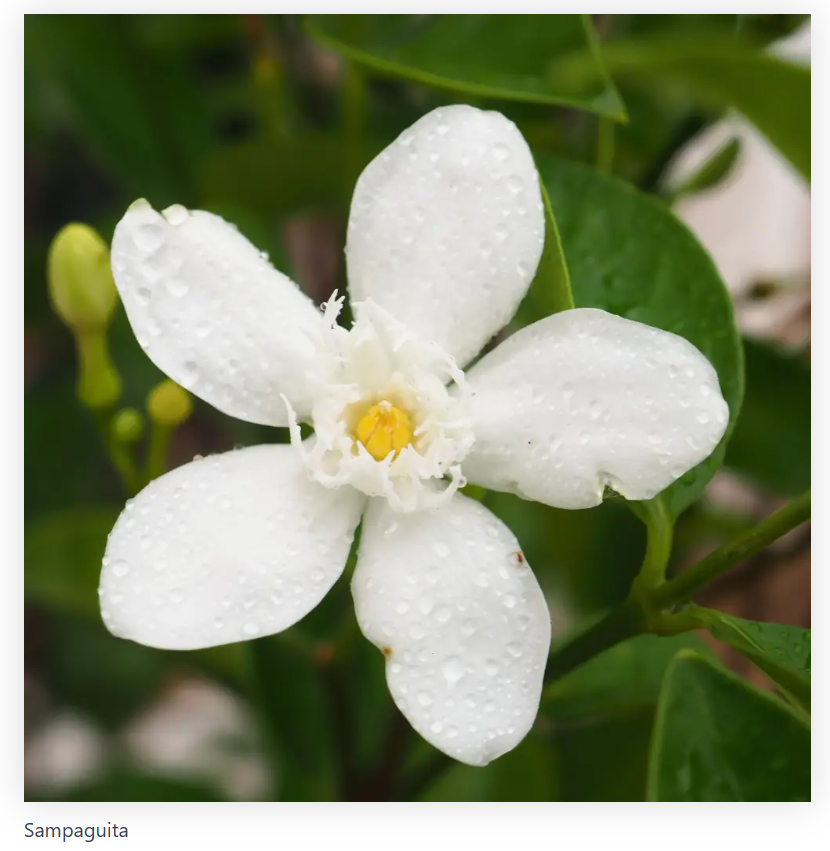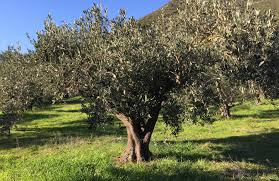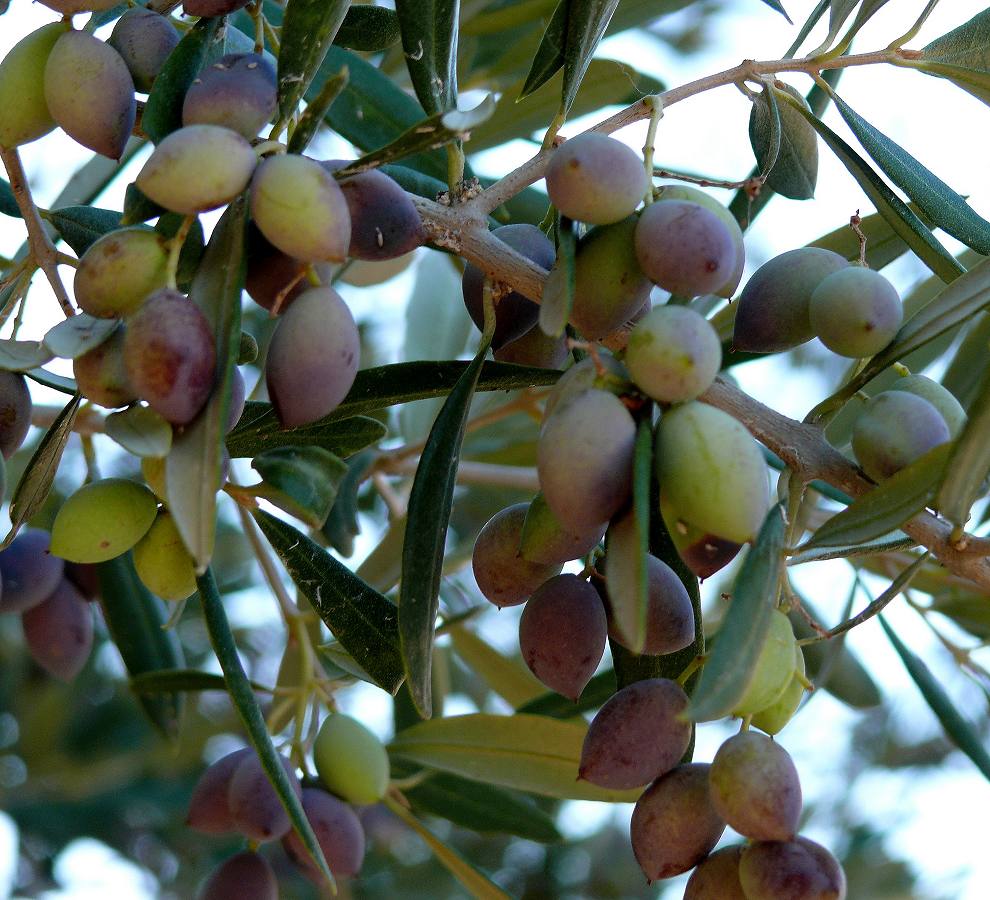Thursday
The Jasmine Plant
What is the national flower of the Philippines?

The Symbolism of Sampaguita
Sampaguita holds deep symbolism and represents the core values and spirit of the Philippines. As the national flower, it embodies purity, simplicity, humility, and strength. The delicate white petals of the Sampaguita flower symbolize purity and innocence, reflecting the innate goodness and moral character of the Filipino people.
Its fragrance, though subtle, permeates the air, reminding us of the simplicity and humility that are cherished in Philippine culture.
Furthermore, Sampaguita is associated with love and devotion. It is often used in teas known for their calming effects and is also a popular choice for wedding garlands, symbolizing eternal love and commitment.
The flower’s fragrant blooms are used in religious offerings, symbolizing reverence and devotion to spiritual practices.
The significance of Sampaguita goes beyond its symbolism. With its origin believed to be the Himalayas, this flower has been cultivated on Philippine soil for centuries. Its ability to bloom at night and wilt within the day reflects the transient nature of life and encourages us to cherish every moment.
Despite not producing seeds, Sampaguita continues to thrive through careful cultivation and propagation from cuttings, mirroring the resilience and adaptability of the Filipino people.
The name “Sampaguita” itself carries profound meaning. Derived from the phrase “sumpa kita,” meaning “I promise you,” it represents the commitment and honor upheld by the Filipino people.
The flower’s representation as a symbol of the Filipino Senate further emphasizes its significance. It stands as a testament to the strength, dignity, and honor embodied by the nation’s leaders.
The Origins and Cultivation of Sampaguita
Sampaguita, with its captivating beauty, originated from the Himalayas and has been cultivated on Philippine soil for centuries. This exquisite flower, scientifically known as Jasminum sambac, holds a special place in Philippine culture and is deeply intertwined with the country’s traditions and customs.
Believed to have been brought to the Philippines by Spanish missionaries in the 17th century, Sampaguita quickly became a beloved and cherished flower among the locals. Its delicate fragrance and pure white petals earned it a prominent position in religious rites, weddings, and other important ceremonies.
The cultivation of Sampaguita is a meticulous process that requires skilled hands and careful attention.
Unlike many other flowers, Sampaguita does not produce seeds. Instead, it is propagated through cuttings, ensuring that each new plant maintains the desirable characteristics of the original flower. This method has been passed down through generations, preserving the authenticity and beauty of Sampaguita.
With its rich history and cultural significance, Sampaguita continues to be a symbol of Philippine culture. Its presence in homes, gardens, and even as a representation of the Filipino Senate, speaks to the flower’s enduring importance and the values it represents – strength, dignity, and honor.



4K
Is trade necessary?
What is the national flower of the Philippines?

The Symbolism of Sampaguita
Sampaguita holds deep symbolism and represents the core values and spirit of the Philippines. As the national flower, it embodies purity, simplicity, humility, and strength. The delicate white petals of the Sampaguita flower symbolize purity and innocence, reflecting the innate goodness and moral character of the Filipino people.
Its fragrance, though subtle, permeates the air, reminding us of the simplicity and humility that are cherished in Philippine culture.
Furthermore, Sampaguita is associated with love and devotion. It is often used in teas known for their calming effects and is also a popular choice for wedding garlands, symbolizing eternal love and commitment.
The flower’s fragrant blooms are used in religious offerings, symbolizing reverence and devotion to spiritual practices.
The significance of Sampaguita goes beyond its symbolism. With its origin believed to be the Himalayas, this flower has been cultivated on Philippine soil for centuries. Its ability to bloom at night and wilt within the day reflects the transient nature of life and encourages us to cherish every moment.
Despite not producing seeds, Sampaguita continues to thrive through careful cultivation and propagation from cuttings, mirroring the resilience and adaptability of the Filipino people.
The name “Sampaguita” itself carries profound meaning. Derived from the phrase “sumpa kita,” meaning “I promise you,” it represents the commitment and honor upheld by the Filipino people.
The flower’s representation as a symbol of the Filipino Senate further emphasizes its significance. It stands as a testament to the strength, dignity, and honor embodied by the nation’s leaders.
The Origins and Cultivation of Sampaguita
Sampaguita, with its captivating beauty, originated from the Himalayas and has been cultivated on Philippine soil for centuries. This exquisite flower, scientifically known as Jasminum sambac, holds a special place in Philippine culture and is deeply intertwined with the country’s traditions and customs.
Believed to have been brought to the Philippines by Spanish missionaries in the 17th century, Sampaguita quickly became a beloved and cherished flower among the locals. Its delicate fragrance and pure white petals earned it a prominent position in religious rites, weddings, and other important ceremonies.
The cultivation of Sampaguita is a meticulous process that requires skilled hands and careful attention.
Unlike many other flowers, Sampaguita does not produce seeds. Instead, it is propagated through cuttings, ensuring that each new plant maintains the desirable characteristics of the original flower. This method has been passed down through generations, preserving the authenticity and beauty of Sampaguita.
With its rich history and cultural significance, Sampaguita continues to be a symbol of Philippine culture. Its presence in homes, gardens, and even as a representation of the Filipino Senate, speaks to the flower’s enduring importance and the values it represents – strength, dignity, and honor.
Now write down 5 facts about the Sampaguita Jasmine Plant.

Does EQUALITY mean treating everybody the same?
ph sc 1742021650 philippine eagle fact file ver 4.pdf
Write some information about the endangered Philippines eagle.

Is power always a positive thing?
We are going to create a whole class fact sheet for our Volcano.
Write down three amazing facts you have learnt.
Times table challenge
4R
What does it mean to be a citizen?
Let's revisit our learning about Greece from last week. What did we find out about everyday life?
Use these resources to find out more - read and make notes about:
School
Family life
Food
Religion
Work
Customs and traditions
Celebrations
Leisure
Interesting facts
Now we will use our notes to answer the question 'What does it mean to be a citizen' by writing sentences in our Greek passports.

Is trade necessary?
Can you remember what the climate of Greece is like?
Because of the very warm temperature, many different plants grow extremely well.
One of these is the olive tree. What fruit do you think the olive tree produces?

What can you see?

Can you think of anything that people use the fruit for?

Olives & Olive Oil
- The olive tree produces an awesome fruit called olive from which we get olive oil.
- The tree has been cultivated in Greece for thousands of years.
- The Mediterranean sun and the Aegean winds help to give the fruit its unique taste.
- Greece is the world’s third largest producer of edible olives and olive oil.
- Spread around the country are 120 million olive trees and 450,000 families depend on olive oil production as their first or second source of income.
- One ancient story tells that the goddess of wisdom Athena dedicated the olive tree to the city of Athens to prove her bond with the city named after her.
- During the Ancient Olympic Games, olive branches were made into wreaths to begiven as a golden medal award to the winners of competitions.
- Greece produces approximately 120.000 tons of table olives which is one of the country’s most important agricultural exports.
- The harvest begins in October and goes on for about two months, depending on the type of olive and the place it is cultivated.
- The green olives are harvested first, then come all the plump black olives that are among the country’s best-known snacks: tight-skinned Kalamata olives with their pointy tip and juicy Amfissas olive that come in an array of browns, blacks and purples.
- Last to be picked up from the tree is the wrinkled black variety. It can be harvested as late as March as it must mature on the branch and is then cured in coarse salt.
- Olives are great in salads such as the famous Greek Salad (Choriatiaki)
- Olives are also used in breads, pies and sauces served with pasta!
- Olives in stews are used in various parts of Greece. On Zakynthos Island, olives are slowly cooked with potatoes and onions.
- In Greece’s mainland olives are served as snacks (meze) while roasted olives (known as oftes elies) are a Cretan delicacy!
- The production of olive oil dates back 4,000 years. Olive keeping in Greece is mainly a family business and each tree is personally taken care of with tenderness.
- Even though 65% of Greece’s olive oil production is limited to the Peloponnese and Crete, the trees are scattered all over country and produce 350,000 tons of this product annually.
- Greek olive oil products are considered top quality worldwide.
- Greece ranks first place in exports of virgin olive oil as it sends abroad to Italy and Spain every year 150-200 thousand tons.
- Every Greek consumes more than 15 kilos of olive oil per year.
- Studies have shown that olive oil is the healthiest product among vegetable oils. It is loaded with antioxidants and protects from various diseases; therefore essential for a balanced diet!

Story Time

Arion and the Dolphin
An Ancient Greek myth.
Listen to the story.
The dolphin is Greece's official national animal. For the Greek people, it symbolises hope, compassion, and giving help when needed.





